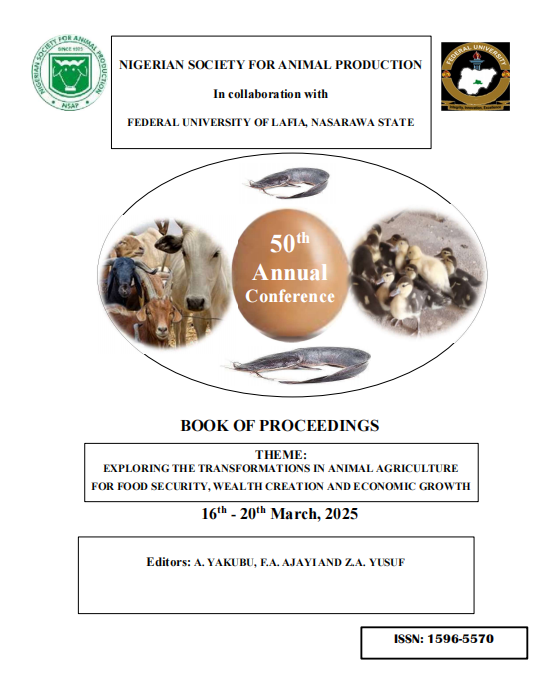BIOMASS YIELD AND QUALITY OF HYDROPONICALLY GROWN FODDER FROM LOCAL SORGHUM (Sorghum bicolor L. Moench) VARIETIES IN GUINEA SAVANNAH ZONE OF NIGERIA
Keywords:
Hydroponics, Sprouts, Fodder, Sorghum, VarietiesAbstract
A study was carried out to evaluate hydroponic biomass yield and quality, production cost, and proximate composition of Red, White, and Yellow local sorghum varieties. The experiment was laid out in a completely randomized design (CRD) comprising 3 sorghum varieties as treatments which were replicated 3 times. The results revealed that there was significant difference (P<0.05) in seeds cost and quantity required, fresh and dry fodder yield per square metre. Higher seeds quantity (668.49 g/m2) and seeds cost (N 658.29) were observed in yellow sorghum, while the least values (597.82 g/m2 and N 354.48) for seeds quantity and cost respectively were recorded in Red sorghum. However, there was no significant difference (P>0.05) among the sorghum varieties in sprout heights and number of leaves. It was also discovered that there were significant differences (P<0.05) in DM, moisture, CF and NFE contents of the seeds. Higher DM of 5.60 % which was statistically similar with 5.20 % found in Red and White sorghum varieties respectively. The highest CF (37.53 %) was observed in Red sorghum, while the highest NFE (30.63 % and 29.87 %) were found in Yellow and Red sorghum, respectively. For the hydroponic fodder produced, the DM, moisture and CF contents differed significantly (P<0.05). The highest DM (68.38%) and CF (37.10 %) were found in Yellow sorghum. While the least DM (51.11 %) and CF (30.03 %) were observed in White sorghum. However, no significant differences were recorded in Ash, EE and CP content of the hydroponic fodder from the three local sorghum varieties. For better yield and moderate production cost, white sorghum variety was recommended.

